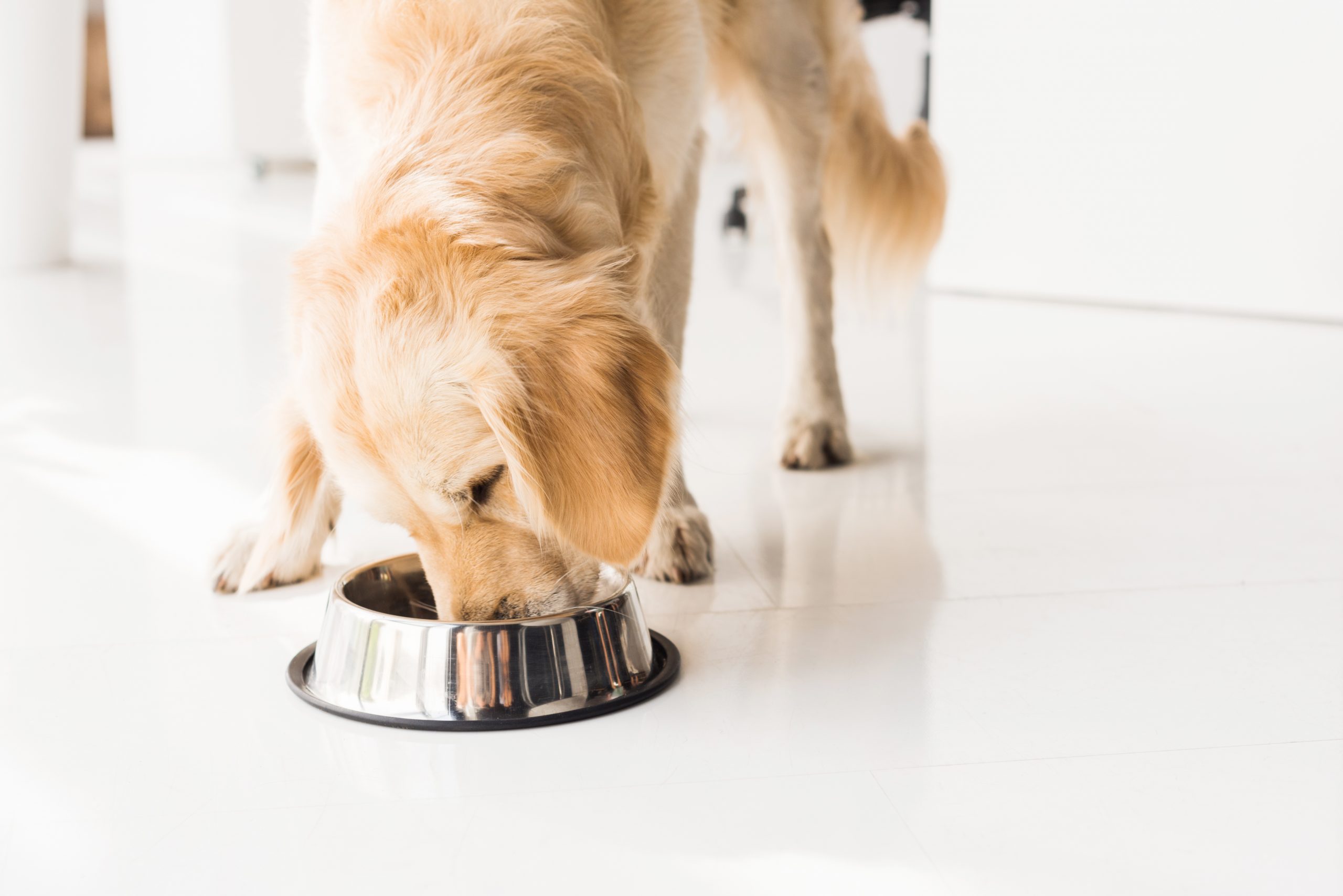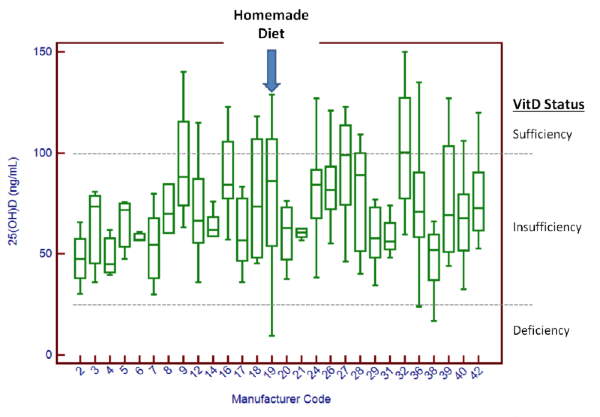
There is a growing trend for pet-owners to avoid commercial pet food in favor of a more natural homemade diet. When planning homemade diets, the balance of micronutrients, including vitamin D, should be emphasized.
VDI, in conjunction with Tufts University and the University of Missouri, conducted a study looking at VitD absorption in 320 dogs on a wide range of diets which encompassed 41 different brands of commercial dog food and 18 various homemade natural diets. [Full Study]
There was considerable variability among the manufacturers, most were VitD insufficient, but the group that had the most variability was the homemade diet group. This particular group ranged from 9.5 to 129.0 ng/mL.

The primary source of VitD in a homemade diet is the fat from the meat product used. VitD, a fat soluble vitamin, is stored in the form of 25(OH)D. This form has a much higher potency than D3. Therefor, if the pet-owner strips the fat from the meat product or uses a meat product low in vitamin D, then the pet will not have access to sufficient stores of vitamin D. In counseling pet-owners on the preparation of their diet, consider these points:
- Protein source – Fish contains about 30 times more VitD than beef.
- Fat inclusion – Fat has significantly higher VitD content than muscle.
- Sun exposure – Chickens, for example, that are raised indoors will have lower stores of VitD due to lack of UVB exposure compared to free-range chickens. [Source]
Other Vitamin D Sufficiency Factors
Aside from the source of VitD certain other factors also play an important role in VitD absorption. These include:
- Intact status – Male neutering decreases VitD levels by 27%; female spaying by 9%.
- Age – Animals over the age of 5 will begin to see a cumulative 3% drop in VitD levels every year.
- Steroid use – Corticosteroids up-regulate the destruction of VitD.
- GI disorders – GI diseases like IBD will decrease the absorption of VitD.
